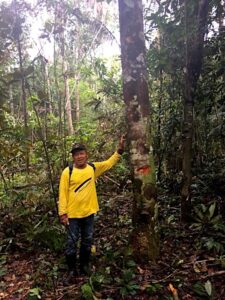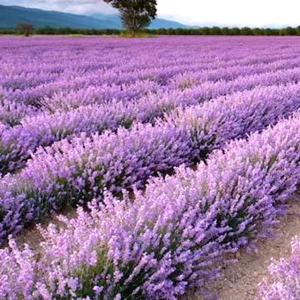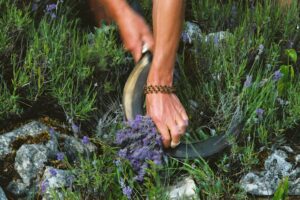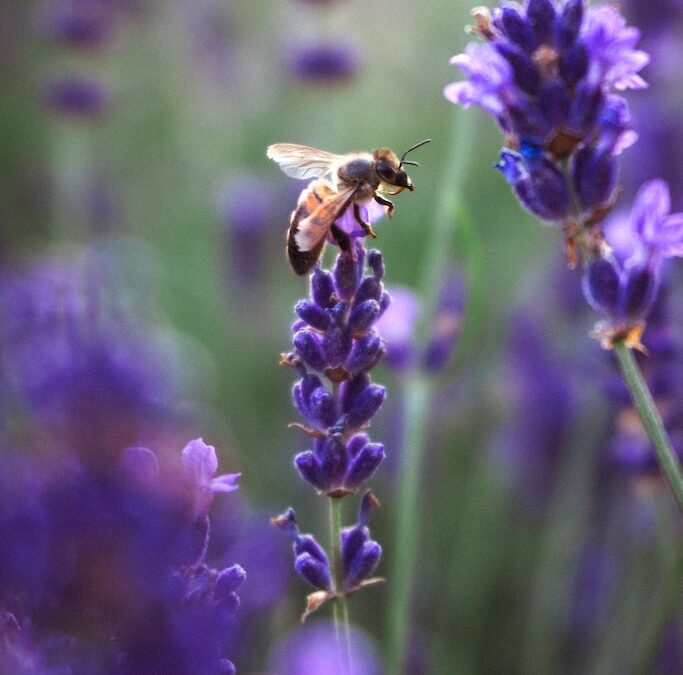“Why do aromatherapists need to worry about sustainability? Because without sustainability, we wouldn’t have aromatherapy.” –Kelly Ablard
Happy Earth Day!
Celebrating Earth Day is an opportunity for all of us to explore our intimate relationship with the Earth.
The wisdom of the Earth belongs to all Life. Encoded in our DNA is the wordless, fathomless reality of Nature from which we all belong and honor as sacred.
I hope you’ll join me in the reverence I feel for the life-sustaining planet we find ourselves on this Earth Day to carry forward a sustainable everyday consciousness.
We depend upon Nature’s wisdom and nourishing gifts, toward which we turn to sustain ourselves – water, food, herbs, essential oils, and flower essences.
In this blog, I’ll summarize why conservation ecology, biodiversity, and sustainability are vital in resourcing and producing essential oils utilized in aromatherapy.
Revisiting Fleur Values & Mission
As an aromatherapist, I take the resourcing and use of essential oils seriously. It takes enormous amounts of plant material to produce essential oils.
One of Fleur’s mission goals is to help my clients, customers, and readers connect to the sacred. I value Nature as a healing modality, and I believe we can be empowered to optimize our life experience across our lifespan through education and self-care.
Embracing ethical compliance and a code of conduct ensures safe best practices that benefit each aspect of the intricate environmental chain. We have a moral responsibility in how we resource essential oil-bearing plants and deliver them to the market to be used by consumers.
Studying essential oils is a lifelong learning path, inseparable from the awareness of protecting and supporting our planet and its precious plants that support us in return. By learning more about using essential oils ethically and sustainably, you can be part of the solution and help protect plants, ecosystems, and economies around the globe.
It’s helpful for all of us to be mindful of the sustainability of the precious botanicals used to produce all of the different essential oils, CO2 extracts, absolutes, carrier oils, hydrosols, and the other beautiful botanically derived products that we use.
Big Concepts: Conservation Ecology, Biodiversity & Sustainability
“Earth provides enough to satisfy every man’s needs, but not every man’s greed.” ―Mahatma Gandhi
As we look at our relationship with the Earth from an aromatherapy perspective, we must also consider the key issues involving conservation ecology, biodiversity, and sustainability in the harvest of and trade in the threatened and near-threatened carrier and essential oil-bearing plant species.
Sustainability, commercial harvesting of essential oils and their effects on Indigenous communities, and reducing our carbon footprints are hot topics in aromatherapy.
The local and global influences affecting sustainability and long-term availability of essential oils, including increasing demand and loss of biodiversity, and other effects, determine how we resource oil-bearing plants.
With the increased demand for essential oils, there’s a decrease in bioavailable aromatic plants too. Climate and seasonal changes, disturbances due to too much or insufficient rainfall, heat, drought, and pests contribute to a changing landscape.
Conservation Ecology
Conservation ecology is the branch of ecology that deals with preserving and managing biodiversity and natural resources. It is a discipline emerging rapidly due to the accelerating deterioration of biological systems and the worldwide epidemic of species extinctions.
Conservation ecology aims to protect and preserve species, including essential and carrier oil-bearing plants, which begins with understanding the concept of biodiversity.
Biodiversity
Biodiversity is the variety of ecosystems, species, populations within species, and species’ genetic diversity.
Unfortunately, the planet’s biodiversity is under many threats caused by human action. These threats include habitat loss, introduced species, climate change, illegal trade, illegal logging, pollution, and over-exploitation of resources affecting the biodiversity of many species, including essential and carrier oil-bearing plants.
Essential oil formation in plants is highly dependent on climatic conditions, especially day length, irradiance, temperature, and water supply. Tropical species follow in their vegetation cycle the dry and rainy seasons; species of the temperate zones react more on day length and the more distant from the equator their natural distribution area is located.
The same species grown in different soils, at different altitudes, harvested in different ways, and extracted with different methods will produce oils with significantly different chemical compositions, some of which are much more desirable than others for therapeutic use.
With extreme weather worldwide devastating natural and agricultural habitats, the loss of crops is unprecedented.
The climate is a definite factor, but so is human greed and exploitation. Deforestation and habitat loss, overharvesting of wild plant populations, cultural changes concerning agriculture in general, and worldwide economic conditions are speeding up the decline.
This issue is critical today as we aim to deliver holistic and allopathic medicines relying on natural resources from plants, flowers, and trees.
 Sustainability
Sustainability
Sustainability is the practice of using natural resources responsibly so that they can support both present and future generations. As climate change becomes a more significant concern, continuing to lessen its impact while providing sustainable practices is critical.
When we talk about essential oil sustainability, we talk about the sustainability and conservation of the plants used to produce essential oils. The term used for such plants is crucial oil-bearing plants.
Depending on the plant, the raw material required to produce one liter (about ¼ gallon) of essential oil can range from a couple hundred kilos (about 400 pounds) to several tons.
The surge in consumer demand is straining the sustainability of many botanicals used for their production. Without attention to sustainability, these species could continue to dwindle to extinction.
Supply Chain Issues
In recent years, the environmental impact of the essential oil supply chain has become an increasingly prevalent area of interest and discussion for aromatherapists.
Widely used worldwide, essential oil use is rising due to the increasing demand for pure natural ingredients. Thus, large quantities of essential oils are produced globally to fuel the industries of fragrances and flavors, cosmetics, as well as phytomedicine and aromatherapy.
Demand comes mainly from the following markets: food and beverage (35%), fragrances, cosmetics and aromatherapy (29%), household (16%), and pharmaceutical (15%). Globally, operating flavors and fragrance manufacturers are among the primary buyers of essential oils. Their sales indicate developments in their market and subsequent demand for essential oils.
More young people are moving away from rural labor-intensive agricultural areas, leaving fewer people to work. Consequently, we see more adulteration of oils due to economic issues, quality control, and environmental degradation due to industrial pollution and GMO crops. These are concerning yet, alarming issues.
Conventionally Produced Essential Oils
Today’s aromatherapy industry relies on corporate farming and commercially distilled essential oils to meet market demands. With the increasing demand for standardized, homogeneous raw materials, more and more wild species have been domesticated and systematically cultivated.
Methods of cultivation, harvesting, and distilling essential oil-bearing plants are time and heavily resource-dependent. The difference between essential oils derived from organic and conventionally grown crops is the use of chemical additions to enhance growth or prohibit pests and weeds.
Large-scale field production of crops utilizes conventional growing methods. Commercial companies often destroy delicate biodiversity habitats and forests or convert arable lands into monoculture farming lands to produce a single plant. Their unsustainable practices endanger local ecosystems.
Conventionally grown means crops are produced with many pesticides, insecticides, herbicides, larvicides, and harsh chemical fertilizers.
The toxic residues they contain from conventional farming, fertilization, and spraying become concentrated through the distillation process and are found in nonorganic essential oils.
Conventional essential oils are lower grade and contain many more harmful and toxic chemicals. For example, conventional citrus oils are more likely to contain pesticides due to how they’re cultivated.
GMO Crops
Like all plants grown for human consumption, many essential oils are produced commercially through “transgenic crops” or GMOs to improve yield.
Besides oil seed crops (soybeans, cottonseed, sunflower seed, canola, rapeseed, and peanuts), oil-bearing herbs such as lavender and mint are mostly grown with genetically modified technology altering their traditional chemical makeup. 
Organic Essential Oils
The raw materials for producing organic essential oil are resourced from cultivating plants or collecting them in Nature.
Oils produced using natural practices help reduce the impact on our planet. They are also free of pesticides and other chemicals that can harm your health. Three categories make naturally pure oils:
- organically grown
- wildcrafted
- certified organic.
Organic essential oils are used less for medical purposes and more for aromatherapy, skincare, alternative healing practices, and natural perfumery.
Holistic eco-sustainability benefits human and environmental interdependence at every level. As consumers, we can choose the types of products that support sustainable lifestyles and health practices to live in harmony with the world.
Wild Collection and Sustainability
Since prehistoric times, humans have gathered wild plants for different purposes; among them are aromatic, essential oil–bearing species used as culinary herbs, spices, flavoring agents, and fragrances.
Plants growing in the wild are a part of the vital biodiversity of the region. The basic idea is that non-destructive collecting benefits help maintain the population, species, and ecosystem diversity.
Sustainable collecting is increasingly considered the most critical conservation strategy for most wild-harvested species and their habitats, given their current and potential contributions to local economies and their more significant value to harvesters over the long term.
 The risk of harvesting wild plant populations is that they can be overexploited and degraded easily. Unfortunately, this appears to be happening with increasing frequency worldwide. Nevertheless, a high number of species are still collected from the wild because
The risk of harvesting wild plant populations is that they can be overexploited and degraded easily. Unfortunately, this appears to be happening with increasing frequency worldwide. Nevertheless, a high number of species are still collected from the wild because
- Many plants and plant products are relied upon for the subsistence of the rural population.
- Small quantities of the respective species are requested at the market only, which makes systematic cultivation unprofitable.
- Some species are difficult to cultivate (slow growth rate and requirement of a unique microclimate).
- Market uncertainties or political circumstances do not allow investing in long-term cultivation.
In practical terms, overharvesting reduces valuable living resources to such low levels that their exploitation is no longer sustainable.
Resources from trees, bark, and roots, the harvest of which inevitably kills the plant, limit how much material can be sustainably harvested from the population in one year.
Over-harvesting can destroy fragile ecosystems and result in soil degradation, water shortages, biodiversity loss, damage to ecosystem functions, and global warming exacerbation.
Meeting Environmental and Ecological Challenges
The growth of the essential oil industry dependent on natural resources brings challenges and has sparked concerns over sustainable sourcing.
There are many environmental and ecological challenges when resourcing and producing essential oils. Enormous quantities of plant material are needed to create a single drop, and many essential oils come from plant species that are overharvested or, worse, endangered.
Overexploitation to meet essential oil demands has threatened many species and challenges environmental and ecological sustainability.
Securing a supply chain can be challenging for an essential oil broker, retailer, or product manufacturer. Circumstances beyond the grower’s or wild harvester’s control — climate conditions, pestilence or disease, labor availability, and civil unrest — add complexity and can lead to supply shortages.
We need more standards to protect critical natural resources for sustainable management, cultivation, and harvests of oil-bearing plants. Meeting the challenges aromatherapists face in utilizing eco-friendly oils further supports the preservation of healthy ecosystems.
Consumer demand for organic products, including organic essential oils, is currently at an all-time high. Certified Organic essential oils embrace organic philosophies and practices that have several positive implications for consumers, manufacturers, and the agricultural world as a whole: for example, by leaning towards more natural-based farming, helping to minimize potentially toxic residues from pesticides, preserving soil health, and contributing towards overall long-term sustainability.
Fleur’s Sustainable Commitment
Fleur is committed to long-term sustainability using the finest botanical organic oils resourced from reputable suppliers.
As a business owner and aromatherapist, I can minimize the environmental impact by knowing the wholesale companies I buy essential oils from are ethical, sustainable, and aligned with our core values.
Supporting small-scale, local farms, embracing diversity, and indigenous and non-indigenous communities that value sustainable growing and harvesting practices ensure that precious resources are protected.
Fleur’s mission is to continue to deliver high-quality therapeutic alchemical wellness care flower essence aromatherapy products.
Earth Wisdom
Our Ritual Essence Earth Wisdom vibrationally connects you to the balance and interrelationship inherent in your DNA and all life on Earth.
In my previous blog – Earth Wisdom – I shared how Nature connectedness captures the proper relationship between people and the rest of nature in relational reciprocity.
Earth Wisdom Ritual Essence will help you reconnect with the magic and spirit of the land. Its energy carries the original intelligence of nature and enhances regenerative resilience.
In conclusion, becoming an educated, discerning consumer will only enhance your enjoyment of the natural pleasures and benefits offered by these powerful, aromatic plant essences.
This Earth Day, I encourage you to join me in your part in preserving our planet’s precious heritage. Remembering the sacred link between yourself, your choices, and our environment, we can co-create a sustainable future for all.
All my aromatic love,
Vidya

